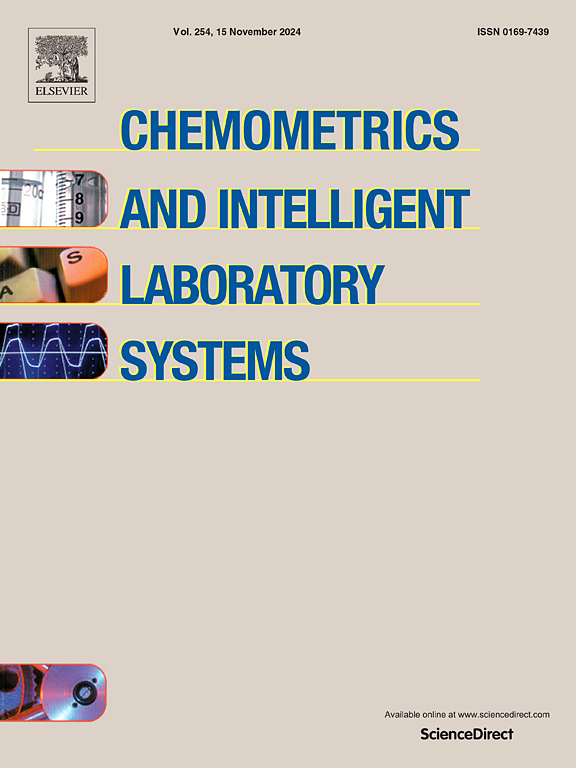集成CFD和机器学习在水处理过程建模中的应用:膜臭氧化过程评估
IF 3.7
2区 化学
Q2 AUTOMATION & CONTROL SYSTEMS
Chemometrics and Intelligent Laboratory Systems
Pub Date : 2024-12-06
DOI:10.1016/j.chemolab.2024.105302
引用次数: 0
摘要
在本研究中,开发并评估了几种基于树的机器学习模型来预测膜分离中的C (mol/m3)。以臭氧氧化膜分离为例进行了水处理。首先利用计算流体动力学(CFD)进行模拟,求解传质方程,得到过程中臭氧的浓度分布(C),然后将结果应用于建立机器学习模型,从而建立溶质浓度关联的混合模型。该数据集由10,000个样本组成,每个样本都有两个特征r (m)和z (m),分别是径向和轴向尺寸的坐标。采用萤火虫算法(FA)对额外树(ET)、随机森林(RF)、梯度增强(GB)和自适应增强树(ADT) 4种模型进行了训练和优化。每个模型的性能使用几个指标进行评估,包括r平方、均方误差、平均绝对误差和最大误差。结果表明,各模型均表现良好,r²值在0.994 ~ 0.999之间,最大误差在0.144 ~ 0.639之间。总体而言,ADT模型表现最佳,r²值为0.999,最大误差为0.143。这些结果表明,基于树的集合模型可以准确地预测基于膜的分离过程中的C参数。本文章由计算机程序翻译,如有差异,请以英文原文为准。
Integration of CFD and machine learning for application in water treatment process modeling: Membrane ozonation process evaluation
In this study, several tree-based machine learning models were developed and evaluated to predict the C (mol/m3) in membrane-based separation. The case study is membrane separation using ozonation for water treatment. Simulations were first conducted using computational fluid dynamics (CFD) to solve mass transfer equations and obtain concentration distribution of ozone in the process (C). Then the results were implemented in building machine learning models, thereby hybrid model was developed for correlation of solute concentration. The dataset consisted of 10,000 samples, each with two features of r (m) and z (m) which are the coordinates in radial and axial dimensions, respectively. Four models including Extra Trees (ET), Random Forest (RF), Gradient Boosting (GB), and Adaptive Boosted Trees (ADT) were trained and optimized using Firefly Algorithm (FA). The performance of each model was assessed using several metrics, including R-squared, mean squared error, mean absolute error, and maximum error. The results showed that all models performed well, with R-squared values ranging from 0.994 to 0.999 and maximum errors ranging from 0.144 to 0.639. Overall, the ADT model achieved the best performance, with an R-squared value of 0.999 and a maximum error of 0.143. These findings suggest that tree-based ensemble models can be utilized to accurately predict the C parameter in the separation process based on membrane.
求助全文
通过发布文献求助,成功后即可免费获取论文全文。
去求助
来源期刊
CiteScore
7.50
自引率
7.70%
发文量
169
审稿时长
3.4 months
期刊介绍:
Chemometrics and Intelligent Laboratory Systems publishes original research papers, short communications, reviews, tutorials and Original Software Publications reporting on development of novel statistical, mathematical, or computer techniques in Chemistry and related disciplines.
Chemometrics is the chemical discipline that uses mathematical and statistical methods to design or select optimal procedures and experiments, and to provide maximum chemical information by analysing chemical data.
The journal deals with the following topics:
1) Development of new statistical, mathematical and chemometrical methods for Chemistry and related fields (Environmental Chemistry, Biochemistry, Toxicology, System Biology, -Omics, etc.)
2) Novel applications of chemometrics to all branches of Chemistry and related fields (typical domains of interest are: process data analysis, experimental design, data mining, signal processing, supervised modelling, decision making, robust statistics, mixture analysis, multivariate calibration etc.) Routine applications of established chemometrical techniques will not be considered.
3) Development of new software that provides novel tools or truly advances the use of chemometrical methods.
4) Well characterized data sets to test performance for the new methods and software.
The journal complies with International Committee of Medical Journal Editors'' Uniform requirements for manuscripts.

 求助内容:
求助内容: 应助结果提醒方式:
应助结果提醒方式:


